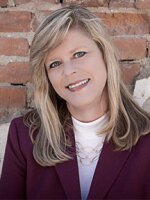Ohio’s number of confirmed cases of COVID-19 spiked to 11,292 Sunday – fueled in part by mass testing at three prisons. But the head of the institute that’s has been working with the state on modeling says this weekend may have been an important one in the fight against coronavirus.
(The full interview with Michael Oglesbee is on "The State of Ohio" this weekend - you can find it here.)
The total of confirmed cases reported Sunday was 11,292, with the total of confirmed and suspected cases at 11,602. That's an increase of 1,353 confirmed cases over Saturday - but it also includes numbers coming in from mass testing at three Ohio prisons.
Michael Oglesbee is the Director of the Ohio State Infectious Diseases Institute. And he said Ohio may have hit the peak as forecast on April 19.
“Weknowtherearemanymoreinfectedindividuals,butwedon'tknowwhatthatnumberis," Oglesbee said.
Oglesbee said that numbercouldbe1,600,whichwasthemodelpredictionthat was released by the state on April 5, "oritcouldbesomeothernumberthatthemodelpredictionwasbasedoncaseswhereweactuallyhavebiologicaltestingandwehavesymptoms."
Oglesbee said the number matters to health care facilities that need to ensure they have capacity to treat people. But he cautioned people that using modeling to predict numbers is like trying to predict the stock market, when they should be looking for trends.
“Whether the number is 1,600 or 600, to some degree, it doesn't matter," Oglesbee said. "It matters to hospitals and health care facilities because they want to know that they have the capacity. Butkeepinmindthatmodelingisabitlike,youknow,lookingatdailytrendsinthestockmarketandtryingtofigureoutwhatthetrajectoryis.”
Ohio Department of Health Director Dr. Amy Acton has repeatedly said that with limited testing, there is no way to determine how many cases of COVID-19 are in Ohio. But she and other experts have estimated that 70% of the population may eventually contract coronavirus.
Copyright 2020 The Statehouse News Bureau. To see more, visit The Statehouse News Bureau. 9(MDAxMzY2MjQ0MDEyMzcyMDQ5MzBhZWU5NA001))





